The Retro-Cool Hamilton Railroad Pocket Watch
A vintage-inspired pocket watch celebrating Hamilton’s founding and connection to America’s railroads.
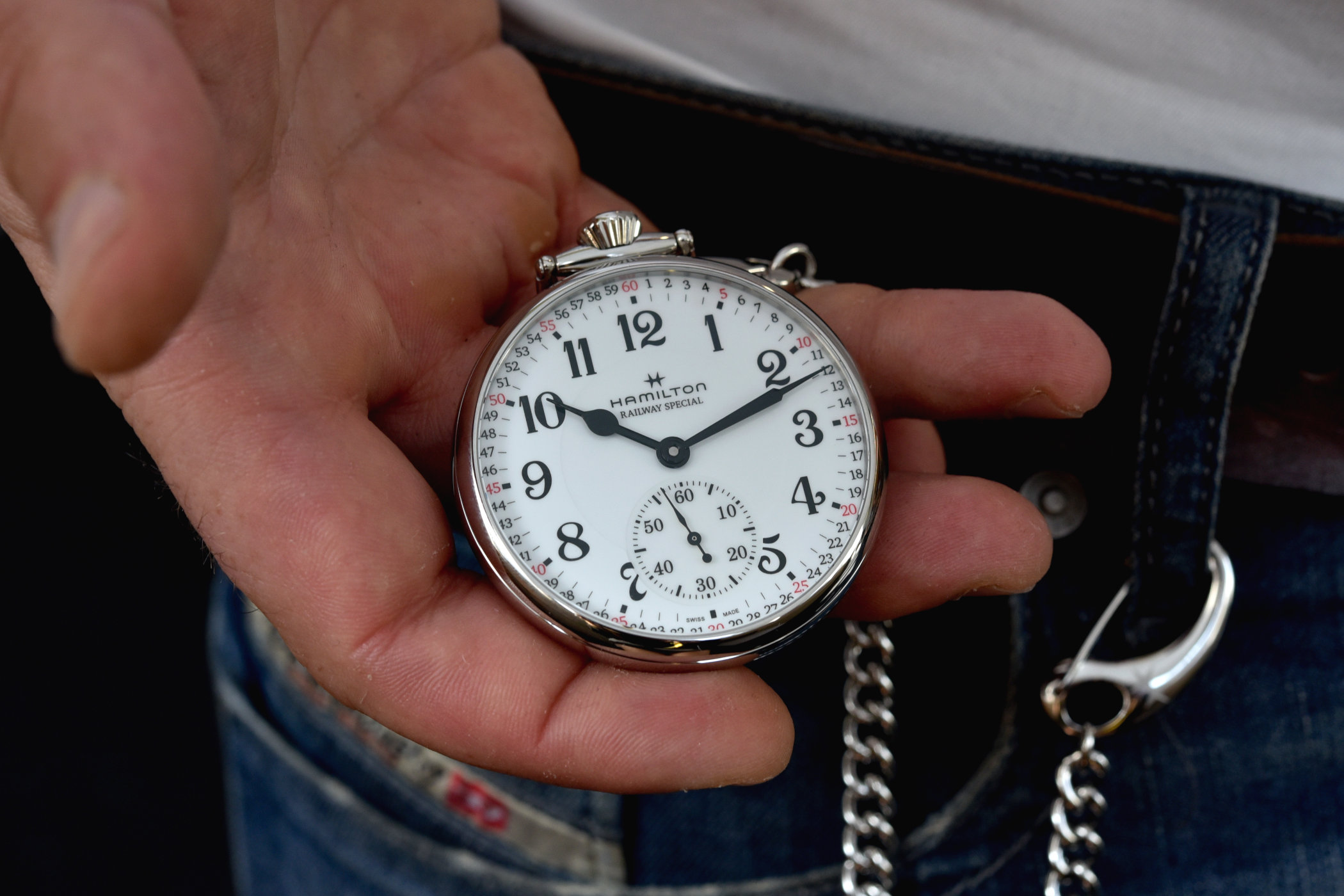
Smartphones are the pocket watches of today, second only to our prized wristwatches for relaying the time. For centuries, however, pocket watches reigned supreme as timekeepers for civilian, military, business and scientific use. If you’re wondering if there’s still a place for pocket watches in the 21st century, check out our in-depth article (short answer, YES). Modern pocket watches tend to be very expensive, luxury pieces made in limited quantities like Omega’s 125th Anniversary Pocket Watch or the Piaget Altiplano 60th Anniversary Pocket Watch, but brands like Tissot and Hamilton are keeping the past alive for the rest of us. Hamilton’s new Railroad Pocket Watch is an excellent example.
American Railroads
Hamilton was founded in 1892 in Lancaster, Pennsylvania and was vital to the American railroad industry. In the late 19th and well into the 20th century, Hamilton pocket watches were important instruments to keep trains coordinated and moving safely. They often operated on single tracks in both directions, so being off by even a few minutes could be catastrophic. Railroad-approved pocket watches became the most accurate mass-produced timekeepers in the world, with Hamilton a leader in the field. Strict performance standards ensured conductors and engineers were properly synched, and American railroad watches made the industry safer. Long-distance travel of both people and goods became efficient and relatively inexpensive and transformed the country.
A Nod to the Past
At 50mm in diameter and 11.95mm in height, the stainless steel case of the Hamilton Railroad Pocket Watch would overwhelm the majority of wrists. However, the larger dial is advantageous for quick glances and precision timekeeping and isn’t particularly large as a pocketed timepiece. Wristwatches are obviously mainstream, but there’s real charm in using a pocket watch. The push/pull crown is positioned at 12 o’clock and is used to wind and set the watch. Of course, there aren’t traditional lugs on a pocket watch, so a two-piece loop under the crown attaches to a steel lanyard. Back in the day, waistcoats were common to accommodate pocket watches and the lanyard kept them attached to their owners. Today, a side pocket and belt loop will do the trick. The case back is solid with an engraved train and “130th Anniversary Railroad Special.” The latter celebrates Hamilton’s 130th anniversary. A sapphire crystal protects the dial and water resistance is rated at 50 metres.
Classic Railroad Dial
Railroad pocket watches had simple, legible dials to read time at a glance. There was no need for fancy embellishments as accuracy was paramount. The white dial resembles enamel and features oversized black Arabic numerals and hour and minute hands. A large seconds sub-dial sits at 6 o’clock with Arabic numerals every ten minutes and a detailed track. The outer minute track has a full set of Arabic numerals and red numerals every five minutes, which was common for railroad dials. Simplicity was the norm for American watches as fancier, more complicated pieces were coming out of Switzerland in the 20th century. The Hamilton’s dial is still interesting and the outer minute track adds detail.
Retro Movement
Powering the Hamilton Railroad Pocket Watch is the hand-wound ETA 6497, based on the Unitas counterpart from the 1960s. It’s not as old as early railroad pocket watches, but certainly has vintage roots and is a proper pocket watch movement. It has 17 jewels and beats at a relatively slow 18,800vph (2.5Hz) with a 50-hour power reserve. Functions include central hours, minutes and non-hacking small seconds at 6 o’clock. It’s usually the ETA 6498 that has small seconds at 6 o’clock, but with the crown rotated from 3 o’clock to 12 o’clock, it moves the small seconds from 9 o’clock to the 6 o’clock position.
Yesterday’s Timekeeper Today
As mentioned, pocket watches are generally relics of the past. That doesn’t mean that a new one has no place in the 21st century. Hamilton’s pocket watch is thoroughly modern with a sapphire crystal and its workhorse movement and will provide a retro vibe when retrieving it from your pocket. Perhaps you have a smartwatch on your wrist, but don’t want to give up on a mechanical piece. Maybe you were just born a century too late. Whatever the case, it can be very rewarding to carry an old-school pocket watch and this one doesn’t disappoint. It retails for CHF 1,350 / EUR 1,495 / USD 1,395 and is limited to 917 pieces, which is Hamilton’s original American address – 917 Columbia Avenue. Not bad at all for such a novel design and legendary Swiss ETA engine.
For more information, please visit HamiltonWatch.com

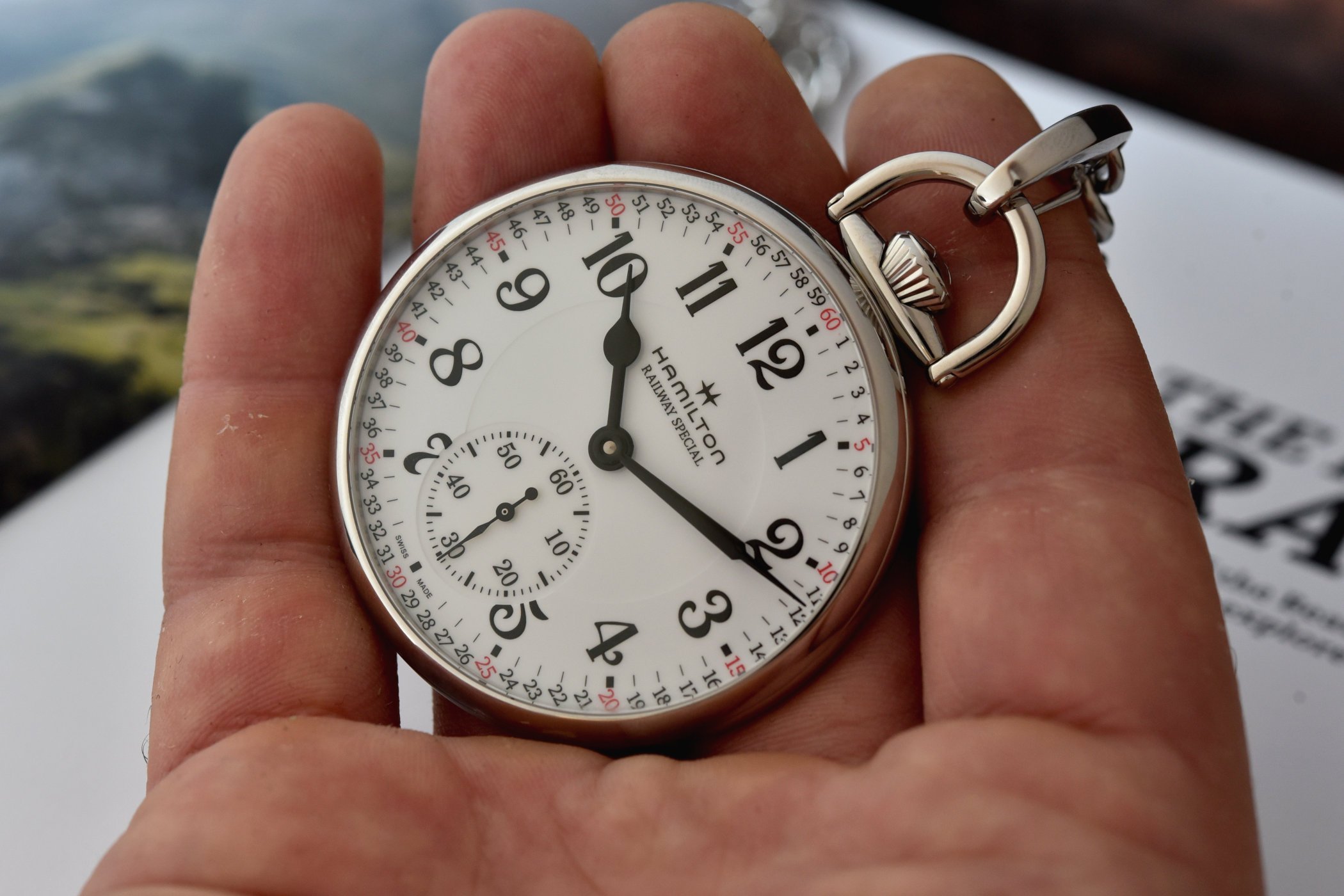
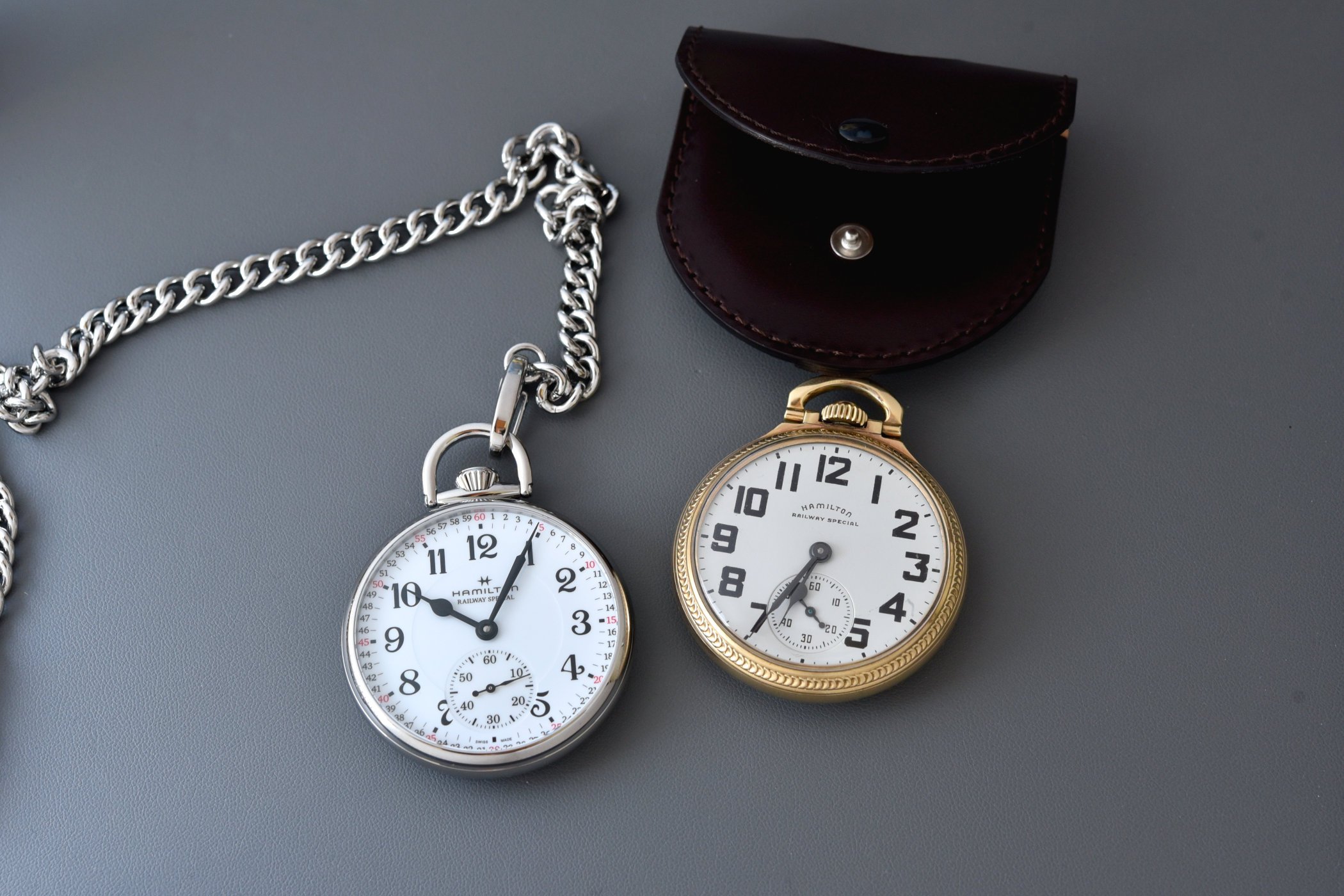

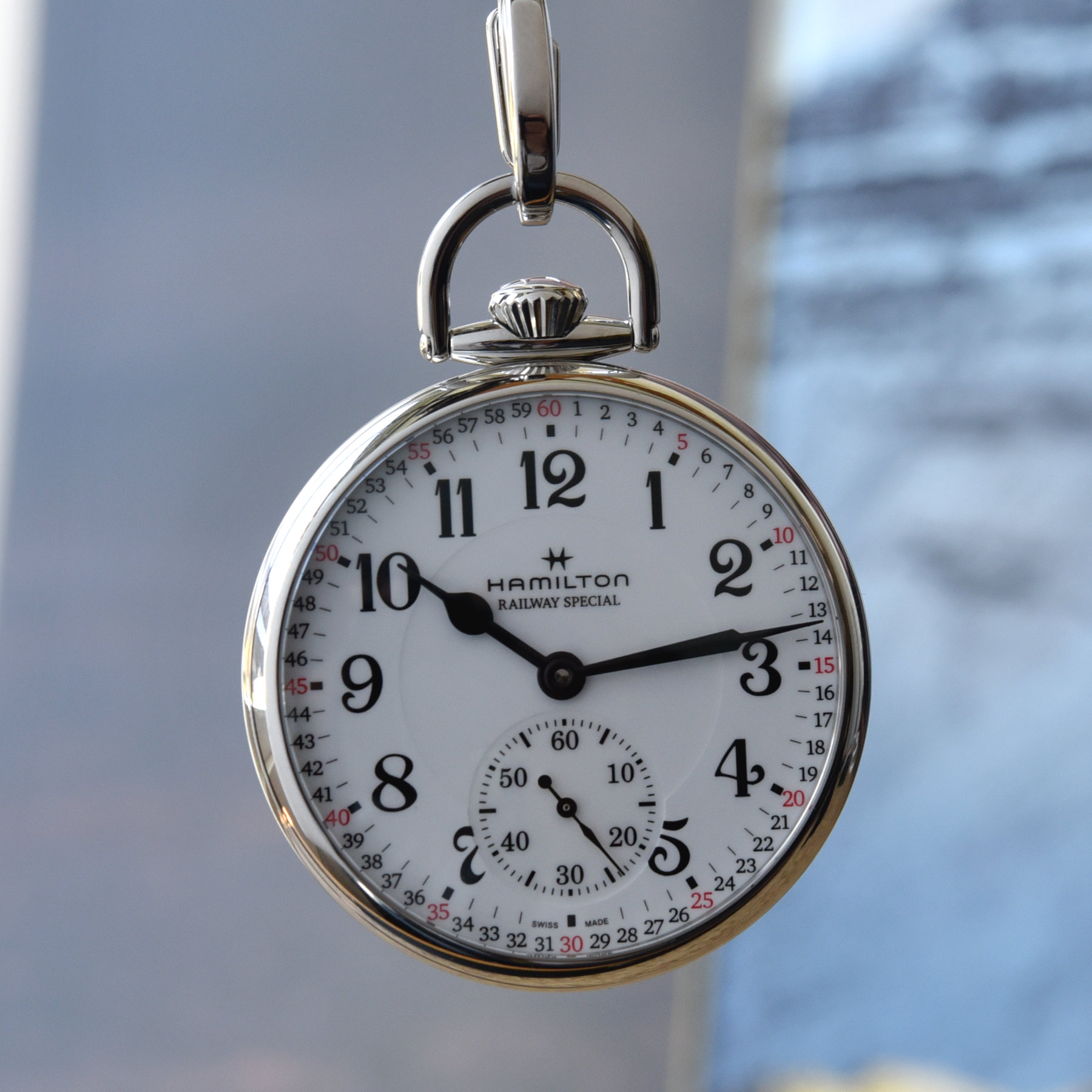

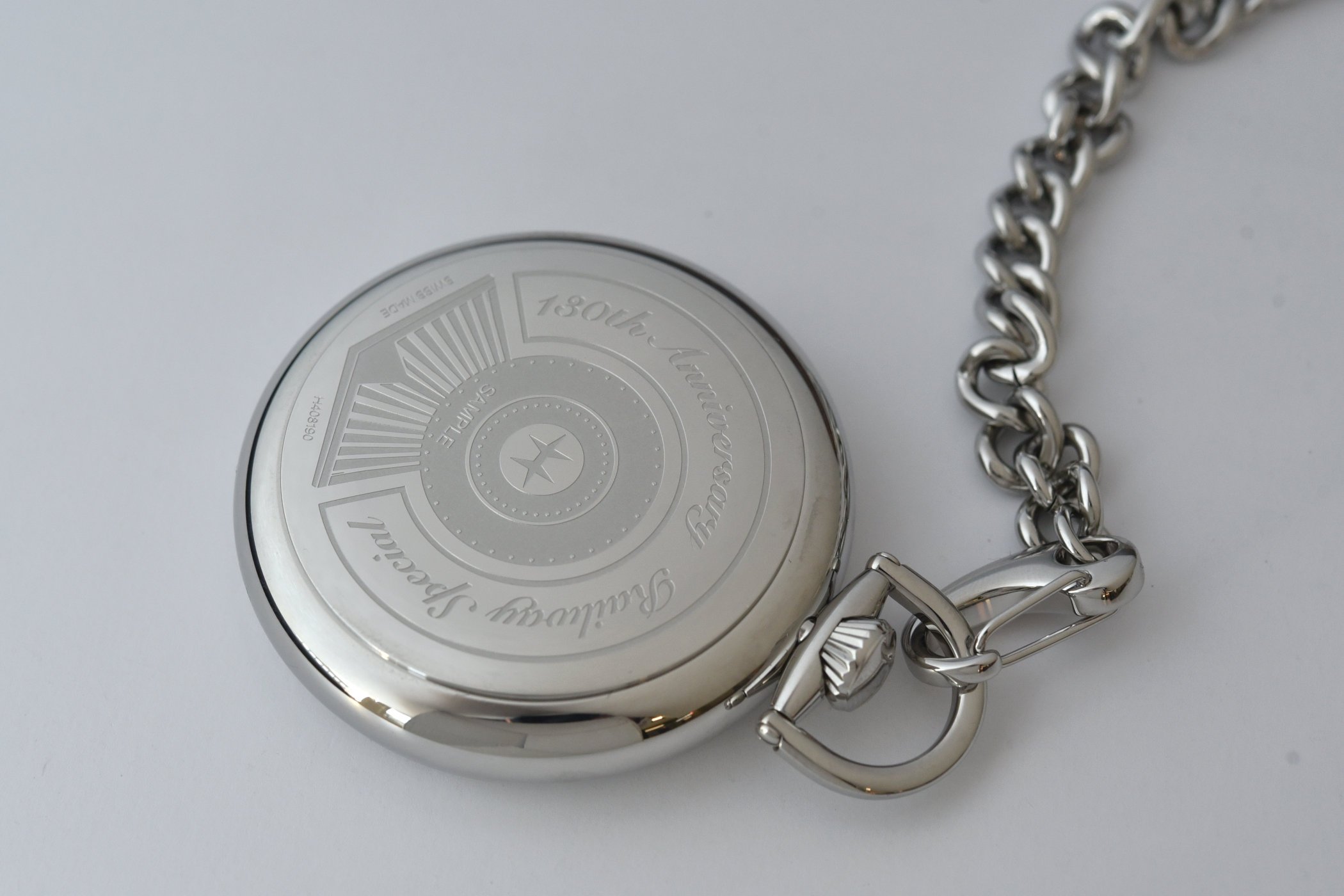



8 responses
It’s a watch pocket. Back in the 1800s, cowboys used to wear their watches on chains and kept them in their waistcosts. To keep them from getting broken, Levis introduced this small pocket where they could keep their watch.
I own 3 Hamilton 992Bs. That was their last rr watch. Production ceased in the 1960s. https://www.kenrockwell.com/watches/hamilton/992b.htm
Unlike the modern watch they had 21 jewels. The crown was only for winding. You had to unscrew the crystal to reset the time. That was a safety feature.
They are not rare. Every railroadman had to own one. I bought mine in pawnshops in the 1970s. They were far more accurate than any other watch that was not a Swiss chronometer costing more than $1,000 ($10,000 in 2022 money) and the Swiss were not a lot more accurate.
Bunches of 992Bs are for sale on eBay for less than $1,000. The modern imitation is not worth it. Buy the original.
If you miss out on this, head over to the Guinand website and check out their Meisterwerk…
$1,300 for a 1960’s movement? Or $150 for a start up such as Gotham. This is just a quick way to raise cash. It’s not even railroad grade. Nope.
As a watch collector, $1300 for a time piece that isn’t even railroad standard, ridiculous. I’ve paid less than that for a Rolex wrist watch. Buy the real thing, they’re amazing. The movements were a thing of beauty to look at, they were adjusted for 5 positions and temperature. The railroads required employees to keep records of the service performed on the RR watches and the watches were regularly checked for accuracy.
Reading this article made me jump out to get my Elgin 571 Grade & Illinois Bunn Special R.R pocket watches (though it started to make me itch for a Hamilton 992B…..).
I personally think that it’s a great homage from Hamilton themselves (well, sort of, back when it was truly “American”) to let people know the early beginnings of the company, but sadly, the specifications doesn’t tick off some pointers that was made by the great Ball himself. Additionally, purchasing a $1300 pocket watch is too steep, as it doesn’t have much versatility compared to a wristwatch (I normally use my Pocket watches as desk clocks or with leather fobs if I use them outdoors, but rarely).
Nonetheless, I’m happy about the release!
I have my Grandfather’s 1913 Patek Phillipe pocket watch. I’ll take that over a $1300 modern pocket watch. It keeps excellent time!
I’m looking voor the Hamilton chain to complete a watch. Who can help me with ghat